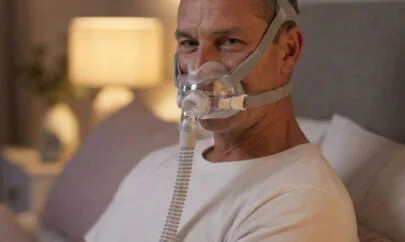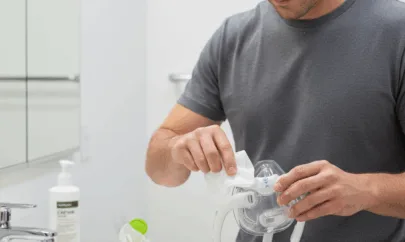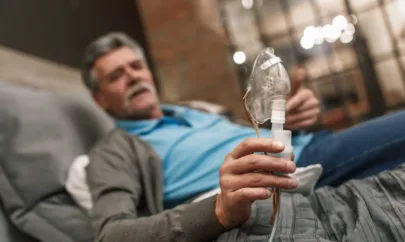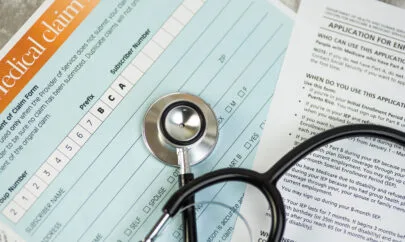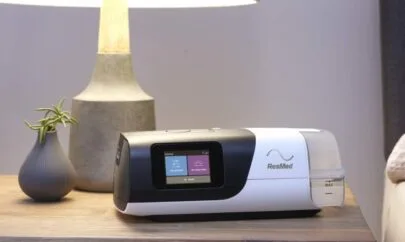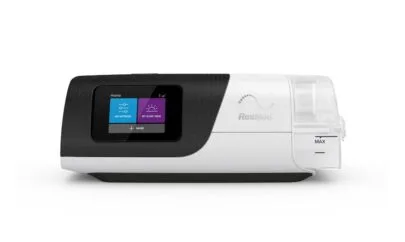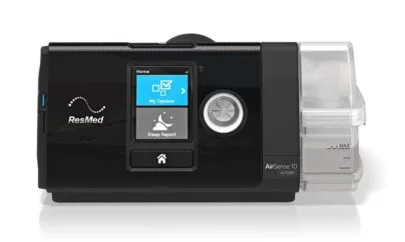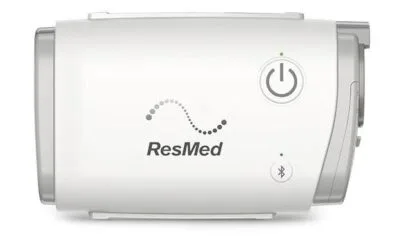
Does a CPAP Machine Use Oxygen? Myths vs. Facts
Sleep apnea is a relatively common sleep disorder characterized by breathing interruptions during sleep. Different treatment options exist, including the use of a CPAP (Continuous Positive Airway Pressure) machine. This machine works by providing a continuous stream of air pressure into the patient’s nose or mouth to keep the upper airway open so that the patient can breathe comfortably throughout the night. It is different from oxygen therapy, which provides supplemental oxygen to increase blood oxygen levels.
Understanding the difference between CPAP therapy and oxygen therapy can impact your treatment plan, as it can help determine the best approach for your individual needs.
The role of oxygen in CPAP therapy for sleep apnea is often misunderstood. In this article, we will discuss the specifics of CPAP machines, how they function, and whether they automatically include oxygen. In this way, you can separate sleep apnea myths from facts and make well-informed decisions about your sleep apnea treatment.
What is a CPAP Machine?
A CPAP (Continuous Positive Airway Pressure) machine is a medical device designed to manage and treat the symptoms of obstructive sleep apnea (OSA). This condition causes brief pauses in breathing during sleep due to the partial or complete collapse of the airways. The CPAP machine provides an adequate flow of pressurized air to help keep the airways open and prevent these pauses in breathing, also known as apneas.
How Does a CPAP Machine Work?
A CPAP machine delivers air through a mask that fits over the nose or mouth. Below is an overview of how it works:
- Air Generation: The machine uses a compressor or motor to create a steady flow of air.
- Air Filtration: The air passes through a filter to remove impurities before reaching the user.
- Air Delivery: The purified air travels through a flexible tube connected to the mask.
- Mask and Headgear: The mask is secured with headgear and adjustable straps for a snug and comfortable fit.
- Pressure Maintenance: The machine maintains a preset pressure level, tailored to the individual’s needs, to keep the airways open.
This allows the patient to breathe comfortably throughout the night without any interruptions. The lungs receive sufficient oxygen, which helps prevent any complications associated with reduced oxygen levels. The difference between the two is that oxygen therapy provides supplementary oxygen to increase blood oxygen levels, while CPAP focuses on maintaining a healthy airflow.
The Role of Air in CPAP Therapy
CPAP machines do not use oxygen by default; they work using the air in the room. The machine draws in room air, filters it to remove impurities, and then pressurizes it using its motor and blower system. This pressurized air is delivered through a hose connected to a mask that fits over the nose or mouth, ensuring the airways remain open during sleep.
The air used is the same as the natural air you breathe, but it is pressurized to a specific level to meet your unique needs.
Although CPAP machines do not use oxygen, supplemental oxygen may be necessary in certain cases. For patients with central sleep apnea (CSA) or other respiratory issues, oxygen therapy may be required alongside CPAP therapy.
In these cases, an oxygen machine for sleeping, such as an oxygen concentrator, can be connected to the CPAP system. This ensures that the patient receives both the required airway pressure and adequate oxygen levels for optimal therapeutic effect. A healthcare provider may recommend this combined therapy based on individual medical needs.
Myth: CPAP Machines are the Same as Oxygen Tanks
One common misconception is that CPAP machines and oxygen tanks serve the same purpose. They are distinct devices with different functions.
CPAP machines and oxygen tanks are designed to address different medical needs. A CPAP machine treats explicitly obstructive sleep apnea (OSA) by delivering pressurized air to keep the airways open during sleep. In contrast, an oxygen tank or oxygen concentrator provides supplemental oxygen for individuals with low oxygen levels due to various respiratory conditions.
Fact: CPAP Enhances Airway Stability, Not Oxygen Levels
Another important distinction is that CPAP therapy does not increase the oxygen levels in the air. Instead, it focuses on maintaining airway stability. The primary function of a CPAP machine is to deliver pressurized air that prevents the airways from collapsing, thereby ensuring uninterrupted breathing during sleep.
This is essential for individuals with OSA, as it helps prevent the breathing pauses characteristic of the condition. This means the patient has sufficient blood oxygen levels throughout the night.
In cases where a patient requires both airway pressure and supplemental oxygen, a healthcare provider may recommend using a CPAP machine in conjunction with an oxygen concentrator or oxygen tank.
Talk to Your Doctor
CPAP machines are an effective and popular method of managing and treating the symptoms of OSA. They provide a constant stream of pressurized air into the patient’s nose or mouth to keep their airways open. This allows them to breathe comfortably throughout the night ensuring that blood oxygen levels remain stable and safe. They do not use oxygen, rather they use the air in the room to function.
Oxygen therapy provides supplementary oxygen to those with decreased blood oxygen levels, which differs from CPAP therapy. Depending on the patient’s individual requirements, both can be used as standalone treatment options or in combination. Understanding each therapy’s function can help determine the best treatment option for you.
If you or a loved one has been diagnosed with OSA, consulting a healthcare provider to develop the most suitable treatment plan is essential. Embrace CPAP therapy, either alone or with oxygen therapy, as a powerful tool to enhance your sleep, health, and overall quality of life.



